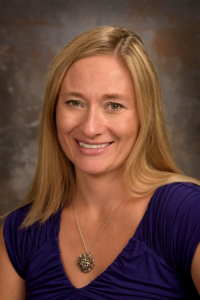
- This event has passed.
YP Lunch and Learn: Jessica Barhaug, Ovintiv, Tying Stage Architecture to Wolfcamp Performance Through Stacked Diagnostics
January 11 @ 11:30 AM - 1:00 PM
Tying Stage Architecture to Wolfcamp Performance Through Stacked Diagnostics
Abstract
While post-frac erosion and Fracture Driven Interactions (FDI) can be good indicators of a successful frac, getting long-term performance data has mainly been limited to full wellbores of a single design and waiting months for the results. The Permian Asset team was debating the impact of stage architecture on production. Did different designs come on strong, but then fall off over time? Could a doubling of flow area from the standard design lead to a doubling of performance? An experiment was designed to answer these questions with a toolbox of emerging production diagnostics. By combining these latest techniques with some geologic characterization from in-bit accelerometer data, performance of a particular design can be examined on a single wellbore, saving time and money. Three different stage architecture designs were alternated along a Wolfcamp wellbore. These designs were selected to look at the impact of cluster and stage spacing and perforation orientation. A novel methodology for oil tracers (AB testing) was deployed in the test well. Oil tracers that had previously underwent calibration testing for an affinity for each other and the reservoir were pumped during frac. A unique oil tracer was pumped per design. Additionally, an oil tracer was pumped in stages along a greenfield portion of the lateral and another in brownfield stages next to a parent well. A carbon fiber rod was run to get an initial look at production allocation by cluster, stage, and design type, allowing a comparison to oil tracers at that snapshot in time.
Depletion analysis was calculated by stage along the entirety of the lateral. Depletion values ranged from 0 up to 500 psi. Despite lateral variability, when averaged by design type, the depletion values were within the margin of error. The oil tracer is showing that an extended stage length 0 degree phased stage (300’ Top Shots) is the top performer versus an extended stage length 90-270 deg phased design (300’ 90/270) and a design with half the stage length and cluster spacing to double the flow area (150’ Top Shots). Initially, the greenfield portion of the lateral (3600’ in the toe) was outperforming the next 3600’ of lateral adjacent to a parent well, but this trend reversed over time. The carbon fiber rod provided a cluster level analysis with the majority of the clusters contributing to the overall production. There is a heel bias associated with the well that is in directional agreement with the greenfield and brownfield tracers at the time of deployment. The rod has the most production attributed to the 150’ Top Shot design, followed by the 300’ Top Shots, with the 300’ 90/270 design coming in last. There is a discrepancy between the top design with the oil tracer and fiber rod data. This could be a normalization issue or a water allocation problem. Continued work is needed in this space to find the root cause. Overall, the stacked diagnostics provided actionable insights on completion designs that can inform future deployments.
Speaker Bio
Jessica is a Senior Completions Engineer for the Ovintiv Chief Completions Team. Her focus is on optimizing job size and perf design through modeling and integrated
diagnostics. Prior to Ovintiv, she was a Senior Reservoir Engineer focusing on field studies and data analytics in the DJ Basin at Great Western Petroleum. Previously,
she worked for WPX Energy as a Senior Completions Engineer in the Williston Basin, where Jessica was one of the lead engineers for a completion and spacing
optimization program. As a Completion and Production Engineer at Schlumberger, she worked a variety of technical projects, including the design, execution and
evaluation of hydraulic fracturing treatments, rate transient analysis, production history matching and microseismic monitoring and evaluation. She received her
M.S. in Petroleum Engineering and B.S in Environmental Engineering from the Colorado School of Mines.

Education
M.S. Petroleum Engineering, Colorado School of Mines, December 2006
B.S. Engineering, Environmental Specialty, Colorado School of Mines, May 2004
Professional Affiliations
Colorado School of Mines Women’s Basketball Team: Fall 2000 – Spring 2004
Society of Women Engineers since 2002
American Association of Petroleum Geologists since 2005
Society of Petroleum Engineers since 2006
Wyoming Geologic Association since 2017



